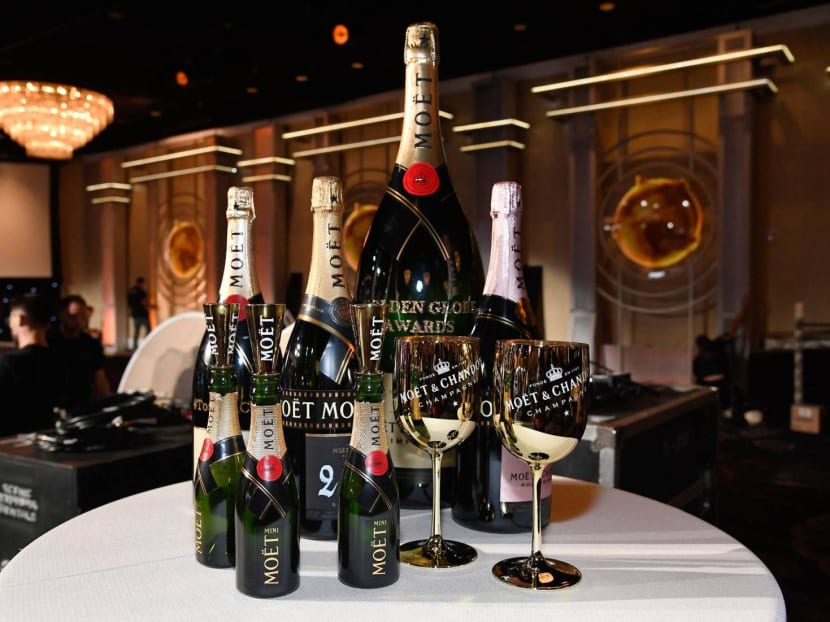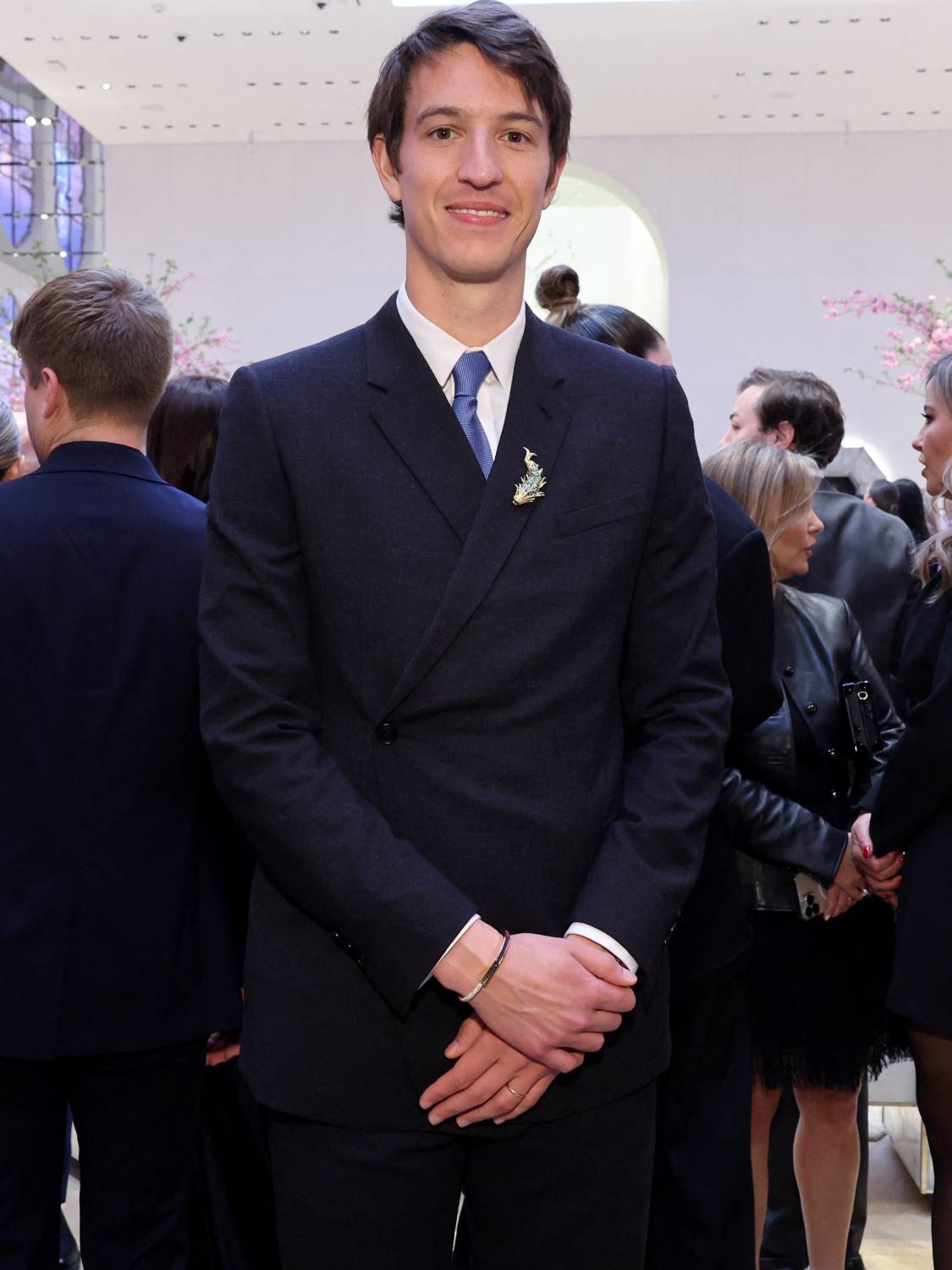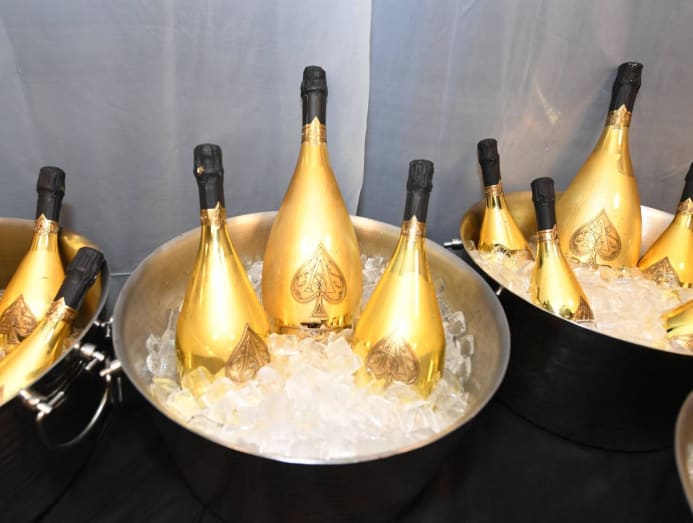Inside Moet Hennessy’s crisis: Dubious deals, soaring prices and hubris
LVMH’s drinks business has been caught in a global downturn. Questionable management decisions are said to have made things worse.

(Photo: Kevork Djansezian/Getty Images/AFP)
Moet Hennessy, the wine and spirits empire owned by France’s LVMH, went from generating €1 billion (US$1.12 billion; S$1.45 billion) in cash in 2019 to burning through €1.5 billion last year, according to documents seen by the Financial Times, as aggressive price increases and an ill-fated acquisition spree hit the luxury group’s drinks business.
The group behind Dom Perignon champagne and Hennessy cognac has been hard hit by a global downturn in sales of alcoholic drinks. But people familiar with Moet Hennessy’s operations say strategic decisions made under the leadership of former chief executive Philippe Schaus, who left the group at the start of 2025, exacerbated its problems.
These included a determination to maintain profitability by increasing prices, a hit-and-miss series of deals, and a lossmaking push into direct-to-consumer sales, according to several sources with knowledge of the business and documents reviewed by the Financial Times.
Moet Hennessy has been a cash cow for LVMH for years. But in a presentation in February last year, reviewed by the Financial Times, senior managers at the wine and spirits group were issued with stark warnings — “Need to save cash!” — as budgets came under strain.
When a surge in sales during the pandemic-era luxury boom began to go into reverse, management did not respond quickly enough to the ensuing downturn, said one source close to the company.
“It got to a point where it looked like Moet Hennessy could do no wrong,” the person said. “That’s what got them.”
The consequences of Moet Hennessy’s struggles became clear this month, when the division’s newly appointed executives told staff that about 1,200 jobs would be cut as part of a cost-cutting drive, and warned that sales would not bounce back soon.
In April, LVMH reported that its wine and spirits sales fell by 9 per cent on an organic basis in the first quarter, compared with a 3 per cent decline across the business as a whole. Moet Hennessy’s profits from recurring operations dropped by 36 per cent to €1.35 billion last year.
But the spirits business had already been comfortably LVMH’s worst-performing division, in terms of sales growth, in the past two years.
Leadership changes have followed poor performance. In February, Jean-Jacques Guiony, LVMH’s former chief financial officer, was appointed chief executive of Moet Hennessy, replacing Schaus. Alexandre Arnault, son of controlling shareholder Bernard Arnault and a former senior executive at jeweller Tiffany, was installed as Guiony’s deputy.

Armed with a mandate to turn around performance, the new executives are reviewing the division’s portfolio, as well as underperforming ventures, such as its direct to consumer retail business. Its private sales business is also being brought directly under Alexandre Arnault’s purview.
LVMH and Moet Hennessy declined to comment.
Among the issues Guiony addressed in a presentation to staff this month was the extent of recent price rises. He acknowledged that prices had been pushed “quite high” and that was “difficult to swallow” for some.
Sources told the Financial Times that retailers had begun to balk at the increases Moet Hennessy pushed on to them, after double digit percentage price rises in both 2021 and 2022.
Prices across the portfolio had risen by well over a third on average since 2019, the people said, adding that maintaining profit margins had become a mantra internally — even as some managers raised concerns it was unsustainable.
In a presentation last year, seen by the Financial Times, Moet Hennessy’s then global head of distribution, Jean-Marc Lacave, said it was “critical” to maintain operating profit margins, telling staff he “would prefer to do less business and be above 30 per cent.”
However, Moet Hennessy reported profit margins of 23 per cent last year. Despite charging far higher prices, sales fell close to 2019 levels, implying substantial volume declines. Lacave left the group at the start of the year.
The spirits group’s struggles came as it was digesting a series of acquisitions made under former boss Schaus. They were designed to reduce Moet Hennessy’s dependence on cognac and champagne, which made up more than 80 per cent of sales at the time.
Schaus has held a variety of senior roles at LVMH and became one of Bernard Arnault’s close advisers in more than two decades with the group. In 2012, he joined the executive committee and was appointed Moet Hennessy’s chair and chief executive five years later.
A near €2 billion acquisition spree included the 2021 purchase of a 50 per cent stake in Jay-Z’s champagne brand Armand de Brignac — a deal that was, coincidentally, sourced by Alexandre Arnault, who is close with the American rapper — as well as the purchase of Provencal rose brand Minuty in 2023 and Napa Valley winemaker Joseph Phelps in 2022.

Schaus — who declined to comment for this story — also signed off on launches of new products, including Volcan tequila and Eminente, a Cuban rum brand.
LVMH typically manages most of its dealmaking through a central team that reports to the chief financial officer.
But Schaus and his team were given wide discretion to make decisions on deals, particularly smaller transactions, according to two people with knowledge of the set-up. However, that was disputed by another person familiar with the matter, who said any significant acquisition went through LVMH’s normal channels.
Several deals have so far failed to deliver returns. One source with knowledge of their performance said that, with the exception of the Minuty acquisition and a handful of other deals for other rose wine estates, the initiatives had “added complexity, lowered margin and drained cash”.
Guiony told staff this month that he was reviewing Moet Hennessy’s portfolio, particularly brands “added over the past few years”. Last week, after visiting the White House with his father, Alexandre Arnault was in Napa Valley visiting the Californian wineries.
Most of the acquired brands could be kept, Guiony said to staff this month, though their growth plans will be scaled back and costs cut substantially.
“These businesses have been driven by an ambition that is very difficult to accommodate today . . . and we have been planning to develop in many geographies at the same time, which is in my view a mistake,” he said.
Under Schaus, Moet Hennessy also accelerated a push into direct to consumer retailing, opening Hennessy stores in China and a Veuve Clicquot outlet at Parisian department store Printemps, as well as selling cases of Dom Perignon and Veuve Clicquot online.
The initiative, which is now losing millions of euros per year, according to the people and documents seen by the Financial Times, has also been placed under review. Tannico, an e-commerce joint venture with Campari, launched in 2021, has also been a flop, the people said. Campari did not respond to a request for comment.
“We don’t know why these decisions were made [and] we’re not going to question them now, but we are going to look at what we should do in the future regarding these activities,” Alexandre Arnault said in this month’s staff presentation.
Even as Moet Hennessy’s sales tumbled last year, LVMH executives pressured the division’s managers to find ways to make up a projected €90 million shortfall in operating profit, relative to its 2024 targets.
“We aren’t in a position to revise down our target,” Schaus wrote in emails seen by the Financial Times, as he urged teams to cut costs. “I know each and every one will have many good reasons to argue for lower numbers, but today we need to all rise to the challenge”.
One source said it was “very rare” that a business within LVMH submitted a forecast lower than the year before, adding that it was “growth, growth at all costs.”
“It was clear [Moet Hennessy] was going to deteriorate further,” the person said. “But Bernard Arnault didn’t want to hear that.”
Adrienne Klasa © 2025 The Financial Times.
This article originally appeared in The Financial Times.








